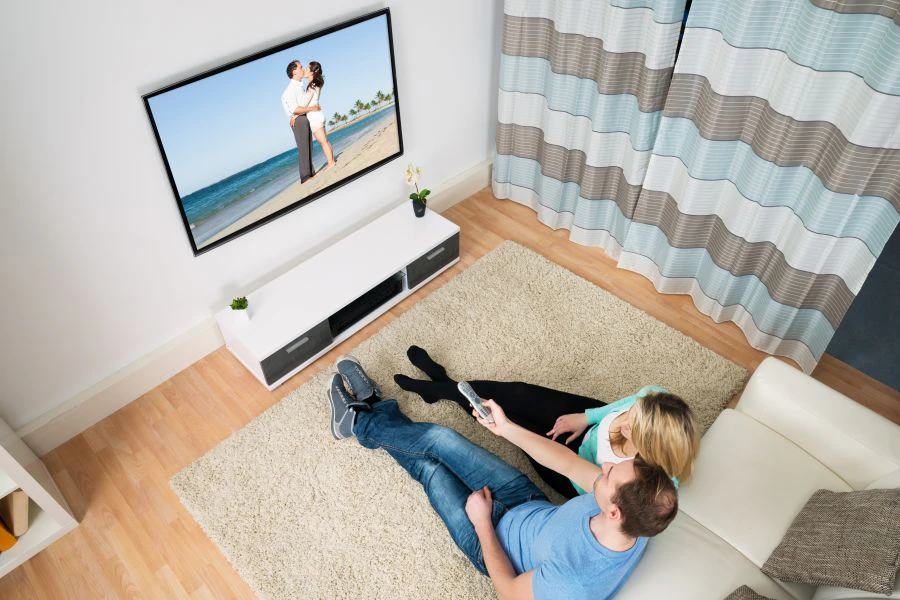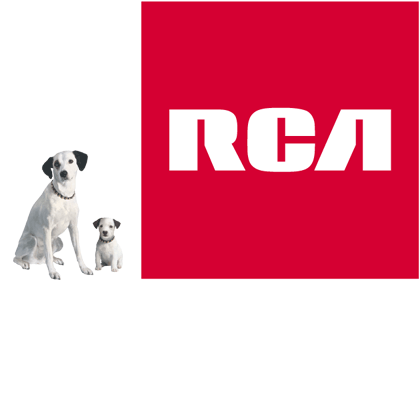
TV Accessories
A perfectly adapted TV wall mount!
Flat screen TVs often have the appearance of a wall painting, and this clearly encourages wall mounting, for optimal aesthetics. To carry out this approach, it is essential to have a TV wall mount perfectly adapted, but you must also have the appropriate equipment to put the fixings in place. And that's without counting on the optimization of the installation, especially regarding the height of the screen! However, the process is rather simple to implement when you take the time to gather the right information.

For each television find the appropriate way to fix the wall mount on the wall.
Have you made your choice for a large screen RCA ROKU TV Set ? We understand you pefectly : owning a large television is the dream of every movie buff! You just have to mount your screen on the wall. Before investing in a wall mount, you need to define essential points. The first three relate to the size and weight of the TV, as well as the material that makes up the wall: in fact, we do not fix a 10 kg screen on a plaster wall as we fix a 30 kg screen on a concrete wall. concrete, and vice versa! Then you have to determine your mobility desires: do you want to be able to rotate the screen from right to left, or to tilt it more or less? Or to make it adjustable in height once installed?
You will be able to choose between a fixed (ultra-thin) TV wall mount, an adjustable TV wall mount with rail or a swivel and tilting ( double swing) TV wall mount. The first two allow you to fix the TV very close to the wall and are very easy to install: if you have a plasterboard wall, the support with rail is preferred, because it allows to space the peg and therefore better distribute the weight over a large area. The other two types of support are more intended for solid material walls. Please note, by choosing a swivel TV stand, your screen will not be placed very close to the wall, which can be a bit strange aesthetically. It is also a type of wall mount which may not be suitable on a wall made of hollow material, depending on the weight of the television set concerned.
Finally, make sure that the TV wall mount of your choice meets the VESA interface standard: the latter regulates the distance between the four mounting holes on the back of televisions, as well as associated TV wall mount. There are different VESA sizes: choose a TV wall mount that displays the same VESA size as your screen. This is a guarantee that the two are fully compatible.
How high should the TV set be fixed?
The question is unavoidable, because when the holes are made in the wall, it is a little late to realize that the TV set is too high or too low! There really isn't a ready-made answer to this question. Indeed, it all depends on the configuration of your room, the height of your sofa and the way you sit to watch the screen. The ideal is to sit on your sofa and fix a point on the wall that does not require having to raise your head too much: you can consider this point as the center of the TV set. Obviously, this point necessarily differs from one person to another, so it can be interesting to allow the adults in the household to all take the test to establish an average height that is suitable for everyone.
If you have the feeling that the height of your TV set should be able to vary from one user to another, there are TV wall mounts on rail that allow you to adjust this setting. The important thing is to ask yourself this question before investing in a wall mount, so as not to end up with a model that does not ultimately meet your expectations. This is why we invite you to ask yourself this question before going in search of the TV support of your choice.


It all depends on the type of wall!
The choice of TV wall mount does not only depend on your TV set, it also depends on the wall, as we have already suggested. It is important to determine what material your home wall is mainly made of. Indeed, a plasterboard or hollow brick wall can hardly support a weight of more than 30 kg, and this requires using a wall mount with spaced dowel points. Pliers or tapping plugs are most suitable for plasterboard.
For a concrete, solid brick or concrete block wall, you have many more possibilities. The weight supported can be much greater and all types of supports are suitable. The spacing anchor is the most suitable, but still pay attention to its size: if the load is less than 20 kg, it must measure from 3 to 5.5 mm. Between 20 and 50 kg, it should measure 6 to 8 mm and beyond 50 kg, choose a size that goes beyond 10 mm.
As for the material to be used to carry out the installation, it goes to the essentials: a drill to make the holes in the wall, a hammer to drive the dowels, and a screwdriver to screw the support to the wall, as well as the plate that attaches to the back of the TV. Everything must fit together easily and be stable to guarantee the safety of the equipment: do not hesitate to make all the necessary checks, both on the wall and on the TV set!
In short, choosing and installing a TV wall mount is not rocket science, as long as you take the time to choose the wall mount model that suits both your wall and your habits. Consequently, there is no longer any reason to do without a large television set!


 Canada (English)
Canada (English)  México (Español)
México (Español)  USA (English)
USA (English)  América Central y el Caribe (Español)
América Central y el Caribe (Español)  Argentina (español)
Argentina (español)  Bolivia (español)
Bolivia (español)  Chile (español)
Chile (español)  Colombia (español)
Colombia (español)  Equador (español)
Equador (español)  Deutschland (Deutsch)
Deutschland (Deutsch)  France (Français)
France (Français)  Nederland (Nederlands)
Nederland (Nederlands)  United Kingdom (English)
United Kingdom (English)